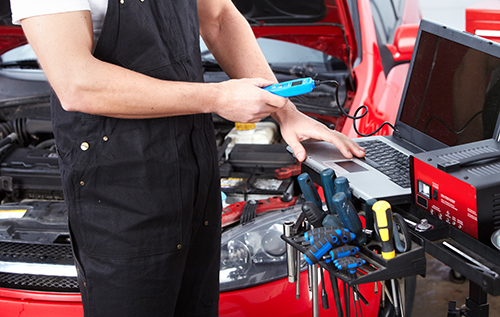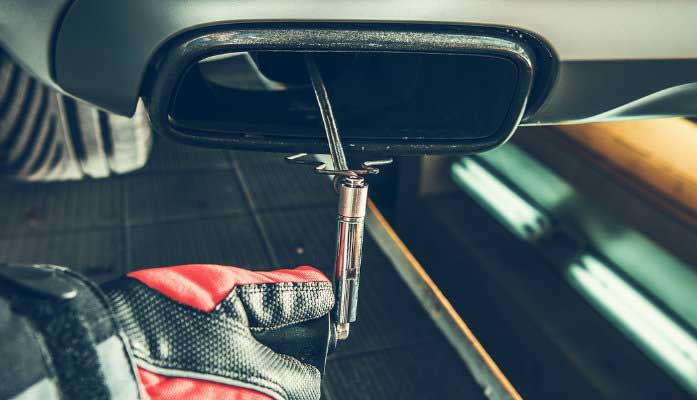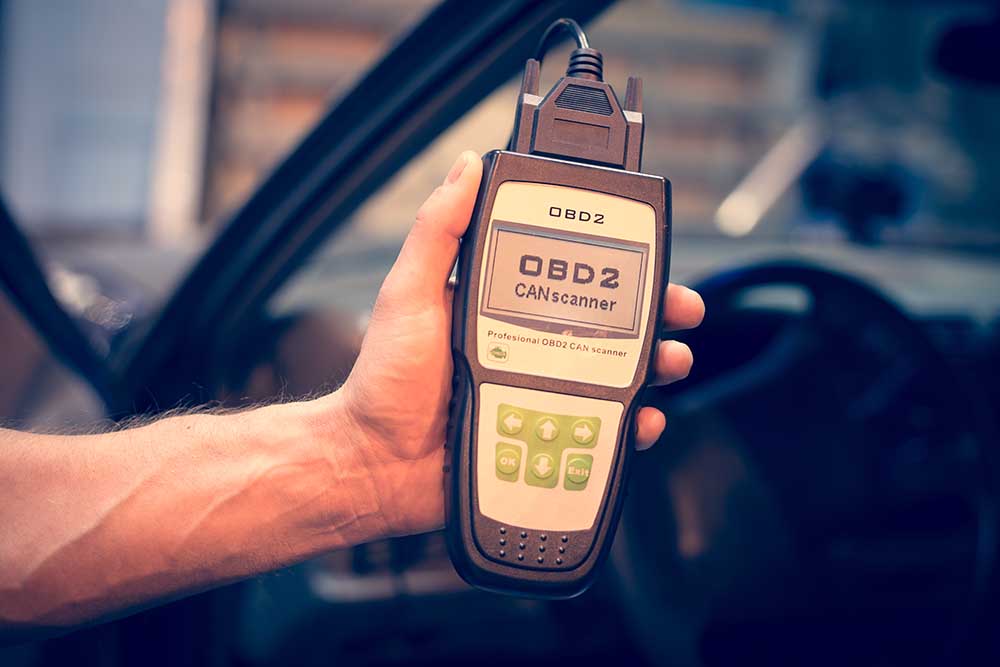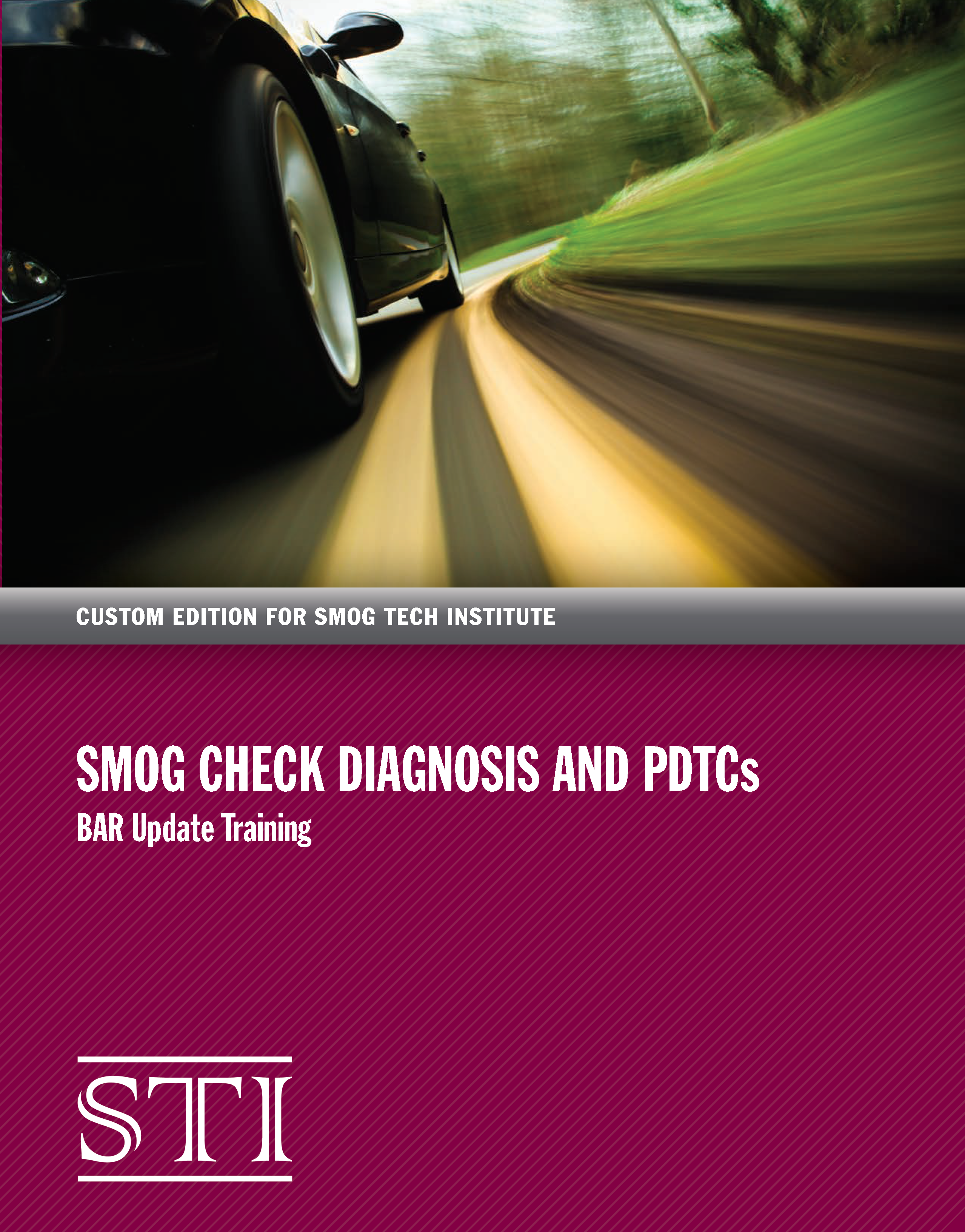Get $100 OFF BAR Specified or $350 when combined with a 16-hour update for online purchases.
Bar Specified is an Alternative to ASE A6, A8, and L1 and is required every 5 years upon recertification.
16 Hour update is required for recertification every two years

 BAR Specified Diagnostic and Repair Training is intended to provide students a high level of competency in the diagnosis and repair of Smog Check failures. This training focuses on the areas of electrical/electronic systems and engine and emission control performance. Students may substitute this training in place of the ASE A6, A8, and L1 for re-certification. Or students with at least two years of engine performance repair experience and who successfully complete this training may qualify for the state licensing examination for the Smog Check Repair Technician License. Click here for a sample of the book >>
BAR Specified Diagnostic and Repair Training is intended to provide students a high level of competency in the diagnosis and repair of Smog Check failures. This training focuses on the areas of electrical/electronic systems and engine and emission control performance. Students may substitute this training in place of the ASE A6, A8, and L1 for re-certification. Or students with at least two years of engine performance repair experience and who successfully complete this training may qualify for the state licensing examination for the Smog Check Repair Technician License. Click here for a sample of the book >>
16 HOUR BAR UPDATE TRAINING
- Five subjects to choose from:
- 1. Diesel Fundamentals and Diagnostic Principals
- 2. New Technologies
- 3. Hybrid Fundamentals and Safety Procedures
- 4. OBD II System Operations and Diagnostic Principals
- 5. Smog Check Diagnosis and Permanent DTCs (New)

- There are now 2 license designations:
- 1. EO for the inspector ( the EO inspectors are required a 4-hour online class by the BAR. If you don't have access to the internet you can complete your training at Smog Tech Institute for a fee of $75.00. Call to schedule time at 714 441 1630).
- 2. EI for repair ( the EI repair technicians are required to complete 16 hours of Update Training at a BAR-certified school on a subject or subjects that have been approved by the BAR).
- NOTE: * Technicians who maintain a repair license must also proof of unexpired ASE A-6, A-8 and L-1 or the BAR Specified Diagnostic & Repair.
- ** Update classes do not expire so you can take them at any time but may only take the same class once.

 1. DIESEL FUNDAMENTALS AND DIAGNOSTIC PRINCIPALS (ID: UT026)
1. DIESEL FUNDAMENTALS AND DIAGNOSTIC PRINCIPALS (ID: UT026)- Course description: There is a general lack of understanding of how diesel engines and fuel systems work and this course will address this lack through the California smog check update program. Students will gain an understanding of Diesel Combustion Principles, Types of Fuel Systems, Emission and Controls, Intake Systems, Onboard Diagnostics, and much more. This manual also includes sound diagnostic strategies based on real-world instructions. The course includes time in the shop with practical labs to enhance the material and determine odes, monitor readiness, and mode 6 data as well. Click here to see the book sample>>

2. NEW TECHNOLOGIES (ID: UT028)
- Course description: The course will help develop within the students, both the understanding and diagnostic skills needed to diagnose and repair vehicles that are using complex systems such ad CAN Networks, Variable Cam Timing, Throttle Control Systems, and Direct Injection, and Air Fuel Ratio Sensors. Each chapter will explain the theory and operation of each system and offer diagnostic strategies based on real-world instruction. The course also includes time in the shop with practical labs to enhance materials learned in class. In the end, the student should have developed knowledge and understanding of 5 critical systems that have been known to be difficult to repair. Click here to see the book sample>>

3. HYBRID FUNDAMENTALS AND SAFETY PROCEDURES (ID: UT029)
- Course description: In the intention of this class is to teach hybrids from a generic perspective and to give a basic understanding of all the systems involved that could be a potential danger. This class will also offer a fundamental understanding of different types of hybrid designs such as Series, Parallel, and series-parallel. This class will expand the students’ knowledge on the use of generators, inverters, and converters, and give a thorough understanding of the difference between high-voltage and low-voltage systems. This class will also cover most of the features available on the popular Toyota hybrids. The class is intended to allow a technician to feel more comfortable while working around or with hybrid technology. Due to safety hazards and the availability of hybrid vehicles, all labs will be conducted in the classroom as a group discussion. Labs will focus on safety on operation and service procedures. This course will have a heavy emphasis on critical safety techniques that should be used by all technicians working on or around hybrid electric vehicles. To receive credit for completion each student must attend all hours of the class and pass the final exam with a score of no less than 70%. The certificate for completion is valid for two years from the date of the final exam. Click here to see the book sample>>

4. OBD II SYSTEM & DIAGNOSTIC PRINCIPALS (ID: UT027)
- Course description: The main focus of the class is to teach the diagnostic strategies today’s technicians should follow to minimize their diagnostic time and improve accuracy. This class will emphasize the utilization of the diagnostics systems that are built into today's vehicles such as Mode 6, Fuel Trim, and Emission Diagnostic Monitors, and is especially helpful for the new smog program that utilizes the DAD for emission testing. The class begins with a chapter on basic computer operation as a refresher on how computers work and how it makes decisions, then discusses the OBD II system's purpose and function, then moves on to some diagnostic approaches such as the 8 step approach, Symptom-based diagnostics, Mode 6, and Fuel trim diagnosis. The diagnostic strategies discussed in this book are valid and real world. This course also includes time in the shop with practical labs to enhance the materials learned in class. These labs will require the student to hook a scan tool to monitor the OBD II system, identify the 9 modes if operation and the global OBD II system, Interpret Mode 6 Data, and perform Fuel Trim calculations. When finished the student should have developed knowledge and skills to accurately diagnose most symptoms based and code-related concerns of failed vehicles. The certificate of completion is valid for two years from the date of the final exam. Click here to see the book sample >>
5. SMOG CHECK DIAGNOSIS AND PERMANENT DTCs (ID UT062)
 Course description:
Course description:
Although gasoline is the commonly used fuel, there are several alternative flex-fuels that can be used in some of today’s vehicles. Diesel fuels contain fewer amounts of sulfur and this allows the introduction of many new clean-burning diesel engines and biodiesel fuels. Air/fuel ratios are affected by octane rating and fuel trim will react accordingly. Monitors and Mode $06 are essential diagnostic tools that can help identify difficult drivability concerns by looking at the results of the PCM tests on the various emissions systems. Beginning July 1, 2019, 2010MY and newer vehicles with an OBD II Permanent Diagnostic Trouble Code (PDTC) stored in the vehicle’s computer memory will fail the BAR-OIS Smog Check. This additional check increases existing inspection requirements and failure criteria for OBD II vehicles. Understanding PDTCs and the process to delete codes stored in permanent memory is an essential skill to verify emission repairs are successful.

